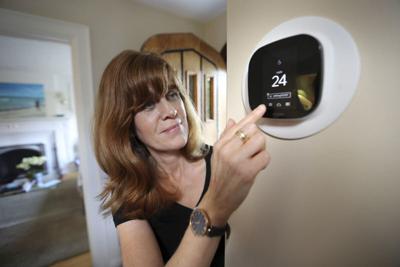
It's an age-old debate in the battle between temperature preference. When do you turn on the heat in your home?



“Room temperature is really a matter of personal comfort and can vary with the season, the way that a home is heated and its spaces are used, as well as a person’s personal comfort preferences,” said Save on Energy, an organization that raises awareness about ways to reduce energy waste. “It is generally considered to be in the range of 20 to 25 C.”
According to Alectra Utilities spokesperson Ashley Trgachef, the ideal indoor temperature for energy saving is around 20 to 21 C when you are home, and 18 C when you are away or sleeping.
“Approximately 60 per cent of the energy consumed by an average home is used for heating and cooling,” Trgachef said. “We recommend using programmable thermostats to maintain comfortable temperatures — lowering the temperature a degree or two can help you save on energy costs.”
It's unknown how cold this winter will be, but several consecutive days of extreme cold weather of -25 C or more can put added stress on your home heating and energy costs, the company said.
And a few maintenance tips can help you save money this winter.
Enbridge Gas customers are able to apply for a home winterproofing program, which includes a free home energy assessment, free upgrades — including insulation, draft proofing and smart thermostat, access to other appliance upgrades and LED lighting. Visit enbridgegas.com to apply.

It's an age-old debate in the battle between temperature preference. When do you turn on the heat in your home?
If you live in an older home with baseboard heat, you can turn down the heaters in the rooms you don't use as much to save energy costs.
“Keep curtains and furniture away from baseboards to ensure proper air circulation. Leave a space of at least 30 centimetres around electric baseboard heaters to allow better warm air circulation,” Trgachef said. “Getting a 'smart' programmable thermostat for baseboards can help you save. Smart thermostats connect to your home’s WiFi and allow you to control the heat when you’re not home. Always check for compatibility with your home, including ensuring the thermostat will work.
Save on Energy has some eligible upgrades for some homeowners who heat with electricity, including weatherstripping, smart thermostats and insulation. Visit saveonenergy.ca for details on the energy affordability program.
If you happen to be one of the homeowners who decided to install a heat pump in the past few months, Trgachef said they are very efficient and can reduce your overall heating and cooling costs.
“We recommend to aim for a thermostat setting between 18-20 C for optimal comfort and efficiency,” she said. “To help manage energy savings, avoid frequent adjustments.”
If you have moved during the summer months, you might not be as familiar with the home's furnace. Check for any switches you may need to flip to turn the furnace from cool to heat, which may be by the unit, or on the thermostat. Many don't realize their furnace has a disconnect switch to turn off its power, and if something leans against it, it might have turned off.
If you try turning the furnace on and it shuts off after a few minutes, it may be a result of the furnace not having enough airflow — due to a dirty filter or plugged vents. If you change the filter and it doesn't correct itself, call an HVAC professional.
Change your furnace filter regularly and keep vents clear of furniture and appliances for optimum operating efficiency.
If it's been awhile since you've had an inspection, contact an HVAC professional to ensure the unit is working properly.
Wrap your electric hot water tank with a water heater blanket to reduce energy loss by up to 40 per cent, especially if your tank is more than 10 years old.
If finances permit, replace your old furnace, water heater, appliances, windows and doors with new Energy Star certified models for year-round savings and comfort. Some residents may qualify for Save on Energy's free heat pump, with its Energy Affordability Program.
